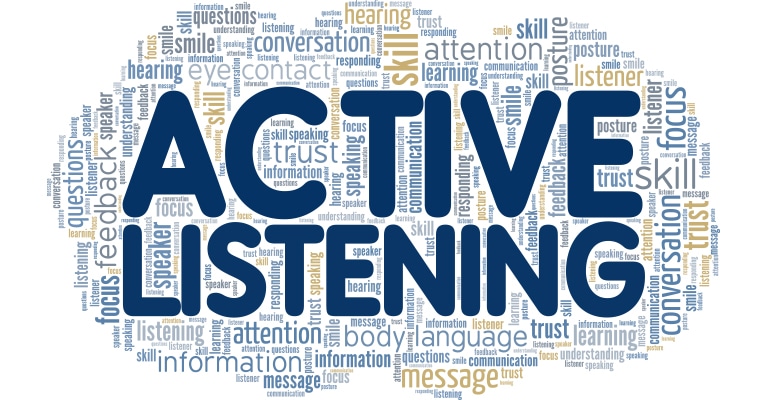The Importance of Problem-Solving in Leadership
Every organization faces challenges. These may include technical issues, conflicts between people, or changes in the market. Good leaders know problem-solving is a key part of their job. When leaders work to improve processes, manage crises, or drive new ideas, their problem-solving skills make a big difference.
Leaders who focus on problem-solving build trust in their teams. They encourage team members to share issues instead of hiding them. This approach helps everyone talk openly, stay transparent, and improve performance.
The Psychology Behind Effective Problem-Solving

Understanding how people think about problem-solving helps leaders tackle issues in a positive way. Leaders with a growth mindset see challenges as chances to learn, while those with a fixed mindset see problems as impossible obstacles. Good problem-solving often needs three things: flexible thinking, emotional control, and resilience.
- Flexible Thinking: Good leaders can think of different ideas and solutions. They don’t stick to just one way of doing things.
- Emotional Control: Strong emotions can make decisions harder. Leaders who control their emotions can stay calm, reduce stress, and focus.
- Resilience: Solving problems takes patience, especially when answers aren’t clear. Resilient leaders keep going through tough times without losing focus.
Effective problem-solving in leadership means seeing challenges as ways to grow. Flexible thinking helps leaders adapt, emotional control keeps them focused, and resilience helps them push through difficulties. Building these traits helps leaders guide their teams and create a culture of growth and improvement.
Key Problem-Solving Traits of Effective Leaders
Great problem-solvers have special traits that help them succeed. Here are some key qualities that improve a leader’s problem-solving skills:
Creativity
Great problem-solvers know old solutions don’t always work. Creative leaders look for new ways to solve issues. They try ideas others might ignore, which often leads to better solutions. Creativity helps leaders ask questions, explore fresh ideas, and inspire their teams to think big.
Analytical Thinking
Strong leaders break big problems into smaller, manageable parts. This way, they can look at each part closely and avoid missing important details. Analytical thinking helps leaders find patterns, consider different factors, and make smart choices by weighing the pros and cons of each solution.
Adaptability
Effective problem-solvers know flexibility is key. When new information or challenges appear, adaptable leaders quickly adjust their strategies. Being adaptable helps leaders respond well to changes and stay ready to find the best solution for each situation.
Patience
Not all problems are solved quickly. Patient leaders know some challenges need time, persistence, and careful planning. By staying calm, they avoid rushing decisions and don’t give up when things get tough. Their patience also comforts their team, creating a steady environment where everyone feels encouraged to work together for lasting solutions.
Collaboration
Effective leaders know they don’t have all the answers, so they ask their team for input. By welcoming different ideas, they use a variety of skills and experiences, which often leads to better solutions. Working together not only improves problem-solving but also creates a positive culture where team members feel valued and motivated to do their best.
Effective problem-solving leaders blend creativity, critical thinking, flexibility, patience, and teamwork. These traits help them face challenges, examine problems closely, and make changes when necessary. Patience reminds them that some solutions take time, while teamwork adds fresh ideas. With these traits, leaders turn challenges into opportunities for growth, building a strong, creative team.
The Steps of Problem-Solving as a Leader

Effective problem-solving uses a clear, step-by-step process. Here’s a five-step guide leaders can follow:
- Identify the Problem: Leaders need to find the real cause of the problem, not just the surface issues.
- Gather Information: Collecting data helps leaders understand how big the problem is and its effects. This might involve team discussions, data analysis, and feedback collection.
- Generate Possible Solutions: Brainstorming ideas allows leaders to explore all options. Creativity and teamwork are important here.
- Evaluate and Select the Best Solution: Leaders review the pros and cons of each idea and pick the best one based on what’s doable, affordable, and effective.
- Implement and Monitor: Careful planning, assigning tasks, and regular checks help leaders make sure the solution works. Adjustments are made if needed.
This structured approach to problem-solving helps leaders handle challenges thoroughly. By finding the root problem, gathering information, and looking at different solutions, leaders open up more possibilities. Choosing the best solution and monitoring it closely allows them to make smart decisions and adjust as needed. This process strengthens the team and improves performance.
Common Barriers to Problem-Solving and How to Overcome Them
Even with good intentions, leaders often face problems that get in the way of effective problem-solving. Here are some common barriers:
- Fear of Failure: Leaders afraid of failing may avoid taking risks. Viewing failures as chances to learn can help.
- Decision Fatigue: Making constant decisions can wear out even strong leaders. Managing tasks and sharing responsibilities can ease this fatigue.
- Cognitive Bias: Biases can affect a leader’s decisions. Staying self-aware and open-minded helps leaders question their own beliefs and stay fair.
- Resistance to Change: Solving problems often needs change, which some may resist. Leaders can build team support by explaining why change is needed and its benefits.
Overcoming these common barriers helps leaders solve problems clearly and confidently. By treating failures as learning moments, easing decision fatigue through delegation, staying aware of biases, and encouraging communication to reduce resistance, leaders become better problem-solvers. Beating these obstacles supports strong decisions and builds a flexible, resilient team.
Real-World Examples of Problem-Solving in Leadership

Steve Jobs at Apple
When Steve Jobs returned to Apple in 1997, the company was in serious trouble and close to failing. At the time, Apple was selling too many different products, and most of them weren’t selling well. Jobs quickly noticed that Apple’s main problem wasn’t just that they had lots of products—there was no clear focus, and people were confused about what the Apple brand even stood for.
To fix this, Jobs made some big changes. He decided to cut more than 70% of Apple’s products, keeping only a few key ones that he thought could succeed. He put Apple’s energy into simple but powerful products like the iMac computer, the iPod music player, and later, the iPhone. Jobs wanted to make sure that everything Apple made was easy to use, high-quality, and fresh.
This focus on simplicity and innovation didn’t just keep Apple alive; it helped Apple become one of the most valuable brands in the world. By doing this, Jobs set a new standard for technology and design, making Apple products something people were excited to use.
Indra Nooyi at PepsiCo
As the CEO of PepsiCo, Indra Nooyi had a big problem to solve: people wanted healthier, more sustainable food choices, but PepsiCo was known for sugary drinks and processed snacks. Nooyi realized that if PepsiCo wanted to keep growing, it had to meet these new demands.
To fix this, Nooyi created a plan called “Performance with Purpose.” This plan aimed to make PepsiCo’s products healthier, with low-calorie drinks and more nutritious snacks. It also focused on making the company more environmentally friendly.
Nooyi’s approach proved that PepsiCo could make healthier products without losing its loyal customers. Her changes helped PepsiCo build a stronger reputation for caring about health and the planet, making it a stronger company in a world that wanted better options.
Elon Musk’s Approach to Innovation
Elon Musk is famous for tackling big problems, especially in areas like space travel, electric cars, and renewable energy. His approach to problem-solving is all about trying new things, testing ideas, and learning from mistakes.
At SpaceX, Musk set a bold goal: to make rockets that could be used again and again. This was a huge challenge, and it took many attempts with lots of failures along the way. But Musk’s method led to big successes, helping to make space travel cheaper and even bringing the dream of Mars exploration closer to reality.
At Tesla, Musk faced many obstacles to make electric cars that people would actually want to drive. By staying focused on overcoming doubts and pushing through challenges, he was able to create cars that are eco-friendly and popular. Musk’s problem-solving approach—focused on resilience, flexibility, and fresh ideas—has changed what we believe is possible in modern technology.
How to Develop Strong Problem-Solving Skills as a Leader

Developing problem-solving skills takes practice, reflection, and a commitment to personal growth. Here are actionable steps leaders can take to improve their problem-solving abilities:
Practice Critical Thinking Exercises
Doing activities that make the brain work hard—like puzzles, logic games, or strategy board games—can help improve problem-solving skills. These activities help people learn how to think about complicated information, break big problems into smaller parts, and find different ways to solve them. Practicing critical thinking regularly gives leaders mental tools to face challenges clearly and with focus, no matter how tricky they might seem.
Learn from Others
Learning how successful leaders solve problems can give helpful ideas about different ways to tackle challenges. Reading stories about these leaders, like in case studies or biographies, shows many strategies and ways of thinking that can be useful. By seeing what worked or didn’t work for others, leaders can pick up new ideas and techniques to use in their own tough situations. This helps them become better at solving problems in their own leadership journey.
Encourage Team Collaboration
When leaders support open teamwork, they unlock a mix of ideas and creative solutions. By making sure team members feel safe to share and work together, they help the team come up with fresh ideas that wouldn’t happen alone. Working as a team also makes everyone stronger, brings in different points of view, and creates a shared commitment to solving problems. This approach benefits both the team and the whole organization.
Reflect on Past Experiences
When leaders look back on past decisions, they can see patterns, strengths, and places to improve. By reviewing what worked well and what didn’t, leaders gain clearer understanding. Regular reflection helps them become more self-aware, improve their strategies, and make better choices in the future. This habit strengthens their leadership overall.
Strengthen Emotional Intelligence
Emotional intelligence is important for making smart decisions, even when things get stressful. Leaders who understand and manage their emotions can stay calm and think clearly, even under pressure. By practicing mindfulness, empathy, and handling stress well, leaders keep their cool. This helps them make fair, balanced choices that support their team and organization.
Invest in Continuous Learning
In a fast-changing world, leaders need to keep learning to stay flexible. Taking industry classes, leadership workshops, and problem-solving training helps them keep up with new trends and tools. Online courses in skills like critical thinking and conflict resolution also make problem-solving easier. This helps leaders face new challenges with a mindset that’s open to growth and change.
Closing Thoughts: Embracing Problem-Solving as a Core Leadership Skill
Problem-solving is more than a skill—it’s a mindset built on curiosity, resilience, and creativity. Leaders who focus on problem-solving build teams that feel confident, adaptable, and prepared for any situation. By leading with openness to change and a focus on solutions, leaders turn challenges into growth opportunities, inspiring their teams to share their best ideas. Strengthening problem-solving skills helps leaders make a lasting impact on their organizations and teams. Whether facing big industry changes or daily issues, problem-solving is the foundation of great leadership.




